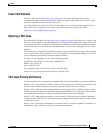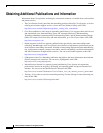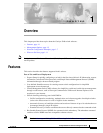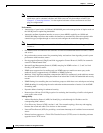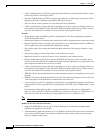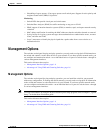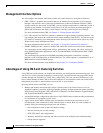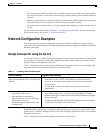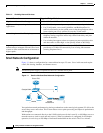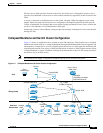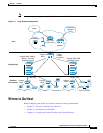
1-7
Catalyst 2940 Switch Software Configuration Guide
78-15507-02
Chapter 1 Overview
Network Configuration Examples
• View a topology of interconnected devices to identify existing switch clusters and eligible switches
that can join a cluster. You can also use the topology to quickly identify link information between
switches.
• Monitor real-time status of a switch or multiple switches from the LEDs on the front-panel images.
The port LED colors on the images are similar to those on the physical LEDs.
• Use an interactive mode that takes you step-by-step through configuring complex features such as
VLANs.
For more information about CMS, see Chapter 3, “Getting Started with CMS.” For more information
about switch clusters, see Chapter 5, “Clustering Switches.”
Network Configuration Examples
This section provides network configuration concepts and includes examples of using the switch to
create dedicated network segments and interconnecting the segments through Fast Ethernet and Gigabit
Ethernet connections.
Design Concepts for Using the Switch
As your network users compete for network bandwidth, it takes longer to send and receive data. When
you configure your network, consider the bandwidth required by your network users and the relative
priority of the network applications they use.
Table 1-1 describes what can cause network performance to degrade and how you can configure your
network to increase the bandwidth available to your network users.
Bandwidth alone is not the only consideration when designing your network. As your network traffic
profiles evolve, consider providing network services that can support applications such as voice and data
integration and security.
Table 1-2 describes some network demands and how you can meet them.
Table 1-1 Increasing Network Performance
Network Demands Suggested Design Methods
Too many users on a single network segment
and a growing number of users accessing the
Internet
• Create smaller network segments so that fewer users share the
bandwidth, and use VLANs and IP subnets to place the network
resources in the same logical network as the users who access those
resources most.
• Use full-duplex operation between the switch and its connected
workstations.
• Increased power of new PCs,
workstations, and servers
• High demand from networked
applications (such as e-mail with large
attached files) and from
bandwidth-intensive applications (such
as multimedia)
• Connect global resources—such as servers and routers to which network
users require equal access—directly to the Fast Ethernet or Gigabit
Ethernet switch ports so that they have their own Fast Ethernet or Gigabit
Ethernet segment.
• Use the Fast EtherChannel or Gigabit EtherChannel feature between the
switch and its connected servers and routers.



